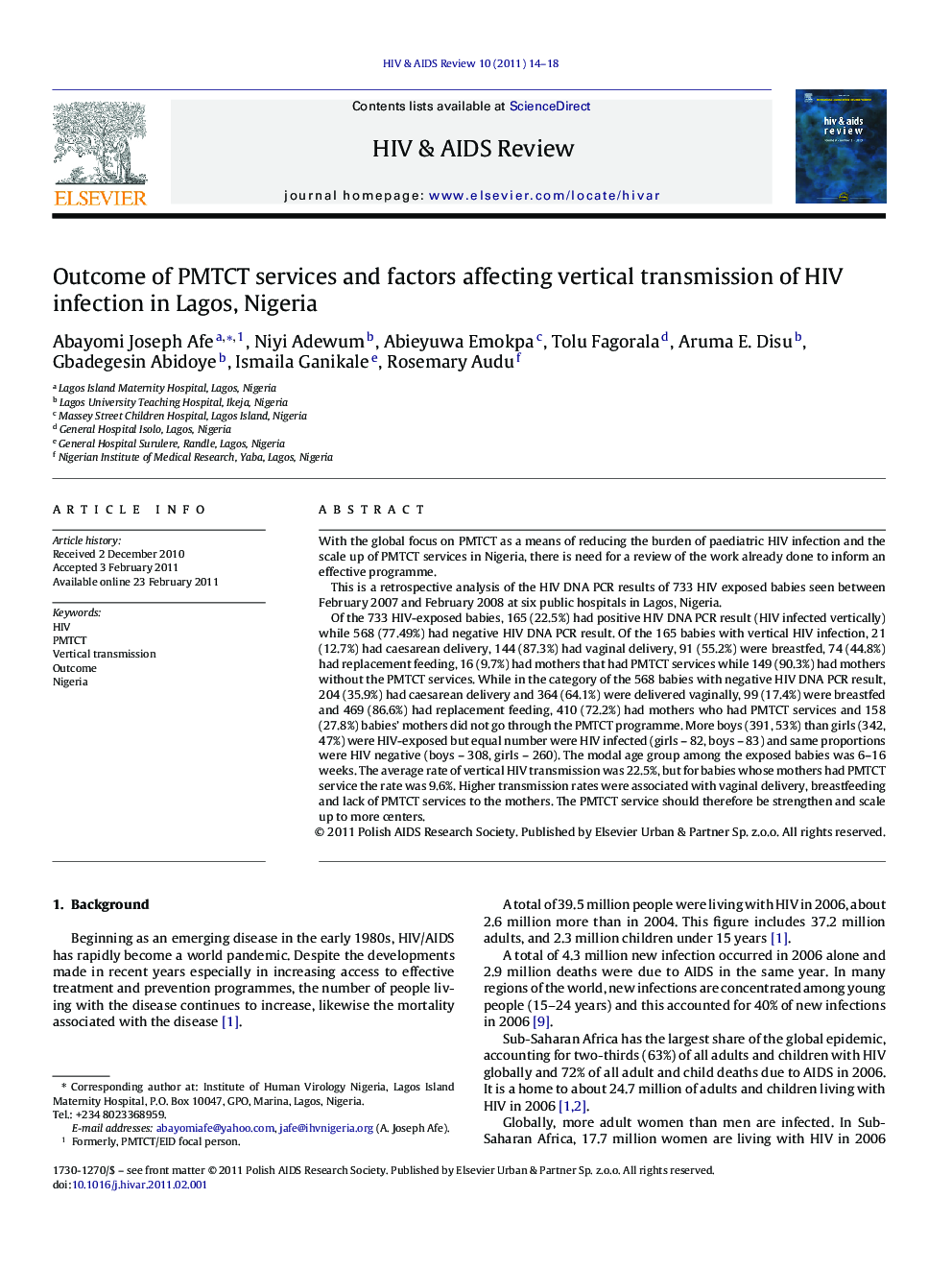| Article ID | Journal | Published Year | Pages | File Type |
|---|---|---|---|---|
| 3332460 | HIV & AIDS Review | 2011 | 5 Pages |
With the global focus on PMTCT as a means of reducing the burden of paediatric HIV infection and the scale up of PMTCT services in Nigeria, there is need for a review of the work already done to inform an effective programme.This is a retrospective analysis of the HIV DNA PCR results of 733 HIV exposed babies seen between February 2007 and February 2008 at six public hospitals in Lagos, Nigeria.Of the 733 HIV-exposed babies, 165 (22.5%) had positive HIV DNA PCR result (HIV infected vertically) while 568 (77.49%) had negative HIV DNA PCR result. Of the 165 babies with vertical HIV infection, 21 (12.7%) had caesarean delivery, 144 (87.3%) had vaginal delivery, 91 (55.2%) were breastfed, 74 (44.8%) had replacement feeding, 16 (9.7%) had mothers that had PMTCT services while 149 (90.3%) had mothers without the PMTCT services. While in the category of the 568 babies with negative HIV DNA PCR result, 204 (35.9%) had caesarean delivery and 364 (64.1%) were delivered vaginally, 99 (17.4%) were breastfed and 469 (86.6%) had replacement feeding, 410 (72.2%) had mothers who had PMTCT services and 158 (27.8%) babies’ mothers did not go through the PMTCT programme. More boys (391, 53%) than girls (342, 47%) were HIV-exposed but equal number were HIV infected (girls – 82, boys – 83) and same proportions were HIV negative (boys – 308, girls – 260). The modal age group among the exposed babies was 6–16 weeks. The average rate of vertical HIV transmission was 22.5%, but for babies whose mothers had PMTCT service the rate was 9.6%. Higher transmission rates were associated with vaginal delivery, breastfeeding and lack of PMTCT services to the mothers. The PMTCT service should therefore be strengthen and scale up to more centers.
